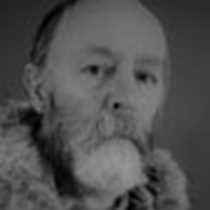Lerwick & Mousa, Shetlands, Scotland
Our second day in Scotland found us in the Shetland Islands, the most northerly archipelago in the British Isles. National Geographic Explorer was docked in the main town of Lerwick and from there we made an early morning start for a visit to two of the Shetland’s most important archaeological sites, Jarlshof and Scatness. The drive due south took us along the coast road and we learned a good deal about Shetland life, culture and history from our local guides on the coaches.
The first stop was at Jarlshof, a multi-layered archaeological site that was given its name by the famous Scottish writer Sir Walter Scott. At first sight this small but busy area is confusing with the very distinct remains of a medieval house dominating the site but this building is completely surrounded by more ancient ruins. By walking the site in chronological order, as it were, we learned that the area near the shore had been inhabited since before the Bronze Age, into the Iron Age, the Pictish era, the Norse-Viking era and later medieval Shetland feudal society. There is no other comparable site in Britain with such a density of multi-occupation.
Scatness, nearby, is equally impressive, probably bigger in area but confined to one type of building – an enormous Pictish broch with its attendant satellite buildings. The broch was discovered in 1975 during attempts to construct a new road for the close-by airport but excavations did not start until 1995. Since then a large amount of the construction has been unearthed, many artifacts found and a great deal of information gleaned about the people, the building and the period.
During lunch we repositioned the ship to the tiny uninhabited island of Mousa where we saw yet another broch. This one, however, is virtually complete and stands at over forty feet high with the intra-mural stairs allowing access right to the top of the enormous circular walls where an impressive view of the surrounding area can be appreciated. Vinnie & Steve explained the purpose of the building and pointed out some of the intricate building techniques employed by the Pictish broch builders over 2,000 years ago. Of the 570 known brochs in Scotland this is the best preserved of them all.
Once back on board the ship a course was set for Bergen, Norway where our voyage of Viking discovery will come to an end. However Sisse and Cotton, the National Geographic photographers, managed to squeeze in one last presentation on “The Hanseatic League.” Bergen was one of the main ports of this medieval group of international traders who had an enormous influence throughout Europe and Scandinavia for centuries and we hope tomorrow to see something of the wooden buildings that still remain from that period where the Hanseatic League carried out their very profitable trade in cod fish.
But the final, formal event of the trip was the Captain’s Farewell Dinner where appropriate commendations were given by the Captain to not only the senior officers of the ship’s various departments but also to many of the ‘behind the scenes’ crew in the hotel and deck departments without whom this trip would not have been possible. These sentiments were echoed by all the Expedition Staff as well.
So, tomorrow, Bergen and goodbye with hopes of seeing each other again sometime, somewhere, with Lindblad Expeditions.




